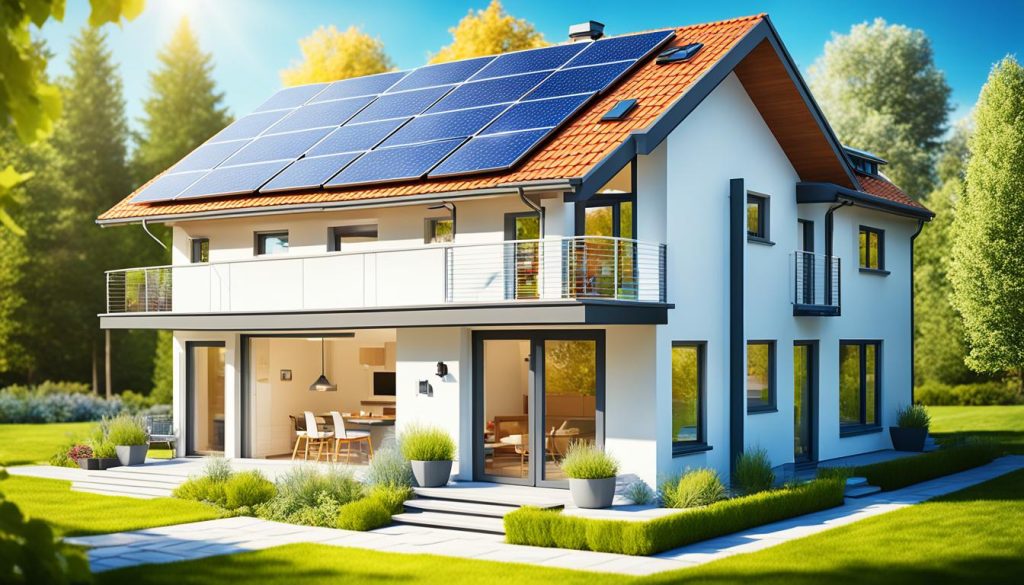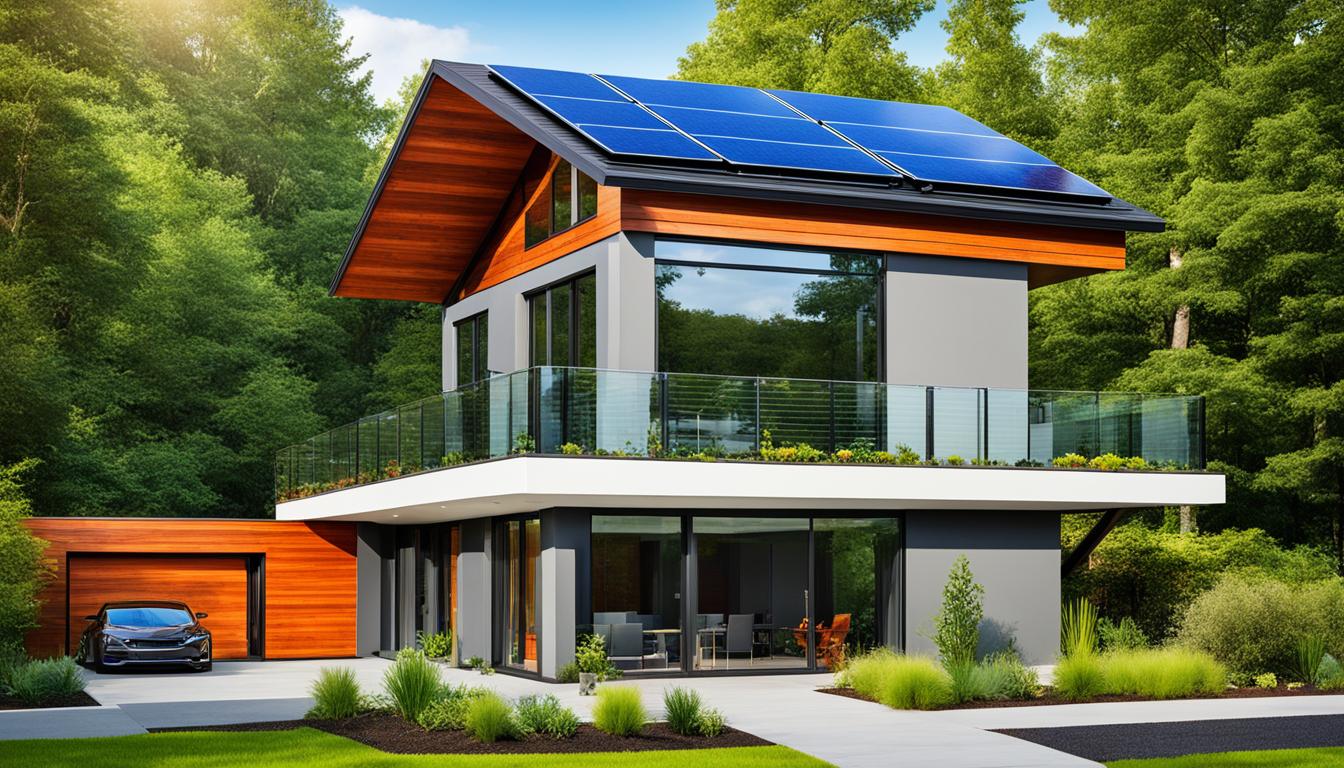Did you know that making energy-efficient upgrades to your home can not only save you money on your energy bills, but also provide you with valuable tax incentives? That’s right, by taking advantage of various home improvement credits, you can maximize your savings while creating a greener and more sustainable living environment.
Whether you’re considering upgrading your HVAC system, improving insulation, or installing renewable energy sources, there are numerous tax incentives available to support your green home upgrades. These incentives are offered by both the Canadian government and provincial authorities, providing homeowners with ample opportunities to save on the cost of renovations.
In this article, I will explore the different tax credits and programs available to Canadian homeowners, highlighting the financial benefits and eligibility criteria. By understanding these incentives, you can make informed decisions regarding your home upgrades and take full advantage of the savings opportunities.
Key Takeaways:
- Energy-efficient home improvement credits provide valuable tax incentives for homeowners.
- By taking advantage of these credits, homeowners can save money on their energy bills and create a greener living environment.
- The Canadian government and provincial authorities offer various tax credits and programs to support green home upgrades.
- These incentives can help offset the cost of renovations and make energy-efficient upgrades more accessible for homeowners.
- Understanding the eligibility criteria and requirements for these programs is essential for maximizing savings.
Federal Tax Credits for Renovations
When it comes to home renovations, the Government of Canada offers various tax credits that can help homeowners save money and improve their living spaces. Two significant tax credits to consider are the substantial renovation tax rebate and the home accessibility expenses tax credit.
The substantial renovation tax rebate is a valuable incentive for homeowners who are planning extensive renovations that transform 90% or more of their homes. By taking advantage of this tax rebate, you can receive a rebate on part of your taxes, providing substantial savings on your renovation costs.
On the other hand, the home accessibility expenses tax credit is designed to support individuals with disabilities and those over the age of 65. This tax credit allows eligible homeowners to deduct expenses for renovations that improve accessibility and safety in their homes. Whether it’s installing wheelchair ramps, widening doorways, or enhancing bathroom accessibility, these renovations can create more inclusive living spaces while providing tax benefits.
By leveraging these federal tax credits, you can save money on your renovations while enhancing the comfort, safety, and accessibility of your home. Whether you’re undertaking a major transformation or making small modifications to accommodate specific needs, these tax incentives can make a significant difference.
| Tax Credit | Description |
|---|---|
| Substantial Renovation Tax Rebate | A rebate on part of your tax if you do substantial renovations that transform 90% or more of your home. |
| Home Accessibility Expenses Tax Credit | Allows people with disabilities and those over 65 to deduct expenses for renovations that improve accessibility and safety in their homes. |
Provincial Tax Credits for Renovations
In addition to federal tax credits, each province in Canada offers its own tax credits for renovations. These provincial tax credits provide additional opportunities for homeowners to save money on their energy-efficient home upgrades. Let’s explore some of the tax credit programs available in different provinces.
Home Renovation Tax Credits in British Columbia
British Columbia offers a home renovation tax credit for homeowners who make accessibility or safety improvements to their homes. Persons with disabilities or those over the age of 65 can receive this tax credit, allowing them to save money while creating a more accessible and secure living environment.
Home Renovation Tax Credit in Manitoba
Manitoba residents can benefit from a home renovation tax credit when they install geothermal or solar heating systems in their homes. By taking advantage of this tax credit, homeowners can not only reduce their energy consumption but also enjoy savings on their renovation costs.
Home Renovation Tax Credit in New Brunswick
New Brunswick also offers a home renovation tax credit to encourage energy-efficient upgrades. This tax credit allows homeowners to save money on renovations that improve the energy efficiency of their homes, helping them reduce their environmental impact and save on energy bills.
Home Renovation Tax Credit in Ontario
In Ontario, homeowners can take advantage of the home renovation tax credit to make their homes more energy efficient. This tax credit provides financial incentives for eligible renovations, such as upgrading insulation, replacing windows, or installing energy-efficient heating and cooling systems.
Home Renovation Tax Credit in Quebec
Quebec offers a home renovation tax credit to support homeowners in making energy-efficient improvements to their properties. This tax credit encourages the adoption of sustainable solutions, such as installing high-performance windows, improving insulation, or upgrading heating and ventilation systems.
Home Renovation Tax Credit in Saskatchewan
Saskatchewan residents can benefit from a home renovation tax credit for various types of renovations. This tax credit encourages homeowners to make energy-efficient upgrades, such as installing solar panels, upgrading insulation, or replacing old appliances with energy-efficient models.
By taking advantage of these provincial tax credits for renovations, homeowners can save money and contribute to a more sustainable future. It’s essential to research and understand the specific eligibility requirements and deadlines for these tax credit programs to make the most of the available opportunities.
Home Energy Conservation Program
The Home Energy Conservation Program is a provincial program in Ontario that aims to incentivize homeowners to enhance the energy efficiency of their homes. By participating in this program, homeowners can not only reduce their energy consumption and carbon footprint but also save money on their energy bills.
Under the Home Energy Conservation Program, participants can receive up to $1600 worth of incentives for eligible upgrades. These upgrades may include but are not limited to:
- Upgrading furnaces to more energy-efficient models
- Improving home insulation to reduce heat loss
- Updating HVAC systems to higher efficiency options
By making these energy-efficient upgrades, homeowners can enjoy a more comfortable living space while also reducing their environmental impact.

Another program that supports energy conservation efforts is the Save on Energy Rebates. This program offers rebates for the purchase of ENERGY STAR certified appliances. ENERGY STAR appliances are designed to consume less energy and operate more efficiently, resulting in lower electricity bills and less strain on the environment.
By taking advantage of both the Home Energy Conservation Program and Save on Energy Rebates, homeowners can make significant progress in creating a more energy-efficient and sustainable living environment for themselves and future generations.
| Eligible Upgrades | Maximum Incentive |
|---|---|
| Upgrade to a more energy-efficient furnace | $400 |
| Improve home insulation | $1600 |
| Update to a higher efficiency HVAC system | $250 |
| Purchase ENERGY STAR certified appliances | Varies |
Residential Protective Plumbing Program
The Residential Protective Plumbing Program (RPPP) is a municipal rebate program in Ottawa that aims to help homeowners prevent basement flooding. By providing rebates for the installation of basement flood prevention equipment such as backwater valves and sump pumps, the RPPP supports homeowners in protecting their homes from water damage and reducing the risk of basement leaks.
The RPPP is an essential initiative for Ottawa residents, as basement flooding can lead to significant property damage, mold growth, and health hazards. By taking advantage of this program, homeowners can implement proactive measures to safeguard their properties and ensure peace of mind.

Basement flood prevention equipment, such as backwater valves, plays a crucial role in preventing water from entering a home through the sewage system during heavy rainfall or sewer backups. Installing a backwater valve can help prevent costly and disruptive basement flooding, protecting valuable belongings and maintaining a safe living environment.
Sump pumps are another important component of basement flood prevention systems. These devices efficiently remove water from the basement, channeling it away from the property’s foundation. By installing a sump pump, homeowners can effectively mitigate the risk of groundwater infiltration, prevent basement flooding, and maintain a dry and habitable basement.
Through the RPPP, Ottawa homeowners can access rebates for both the purchase and installation of basement flood prevention equipment. By reducing the financial burden associated with these essential upgrades, the program makes it more accessible for homeowners to proactively protect their properties.
Preventing basement flooding not only safeguards homes but also helps to preserve the overall integrity of the community and reduces the strain on local infrastructure. By participating in the RPPP, homeowners in Ottawa demonstrate their commitment to environmental sustainability and collective flood prevention efforts.
Table: Eligible Equipment under the Residential Protective Plumbing Program (RPPP)
| Equipment | Rebate Amount |
|---|---|
| Backwater Valve | $X |
| Sump Pump | $X |
| Other eligible equipment | $X |
Note: The rebate amounts shown in the table are subject to change. For the most accurate and up-to-date information on rebate amounts and eligibility criteria, homeowners are advised to consult the official RPPP website or contact the program administrators.
HST New Housing Rebate and Home Accessibility Tax Credit
Are you planning to make major renovations, add onto your home, or convert a non-residential property into a residential one? If so, you’ll be glad to know that there are financial incentives available to help you save on these projects. One of these incentives is the HST New Housing Rebate, which offers rebates to homeowners for eligible renovations. With this rebate, you can potentially save up to $30,000 on the Harmonized Sales Tax (HST) paid for your renovations.
For seniors and individuals with disabilities, there is another valuable program called the Home Accessibility Tax Credit (HATC). This non-refundable tax credit is designed to provide financial support for mobility renovations in your home. By taking advantage of the HATC, you can receive a rebate on qualifying expenses and make your home more accessible and comfortable.
Both the HST New Housing Rebate and the Home Accessibility Tax Credit offer significant benefits for Canadian homeowners. Whether you’re looking to improve your living space with major renovations or enhance accessibility for yourself or a loved one, these programs can help you save money and create a home that meets your needs.
